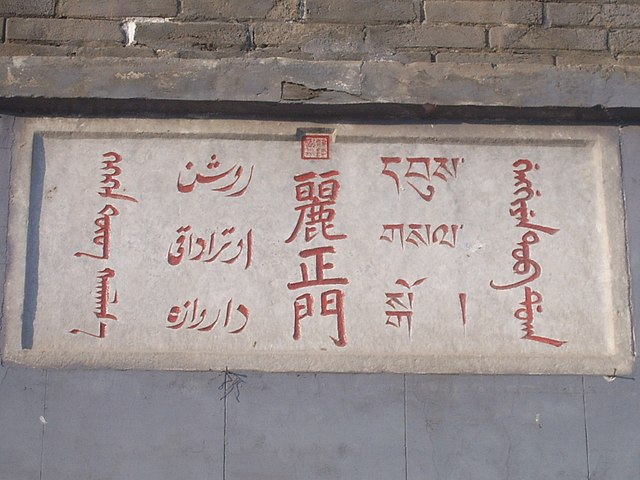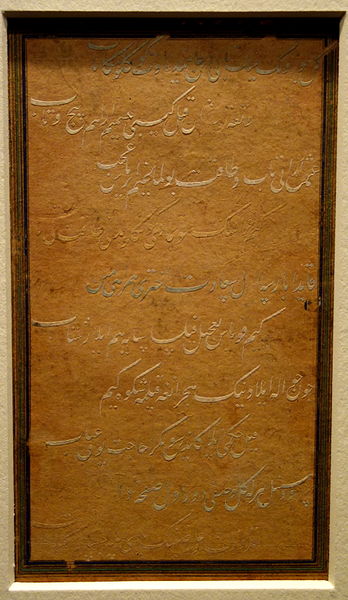Abu al-Ghazi Bahadur was Khan of Khiva from 1643 to 1663. He spent ten years in Persia before becoming khan, and was very well educated, writing two historical works in the Khiva dialect of the Chagatai language. He was a descendant of Genghis Khan via Arab Shah.
Abu al-Ghazi's portrait in the museum of Khiva
Chagatai, also known as Turki, Eastern Turkic, or Chagatai Turkic, is an extinct Turkic language that was once widely spoken across Central Asia. It remained the shared literary language in the region until the early 20th century. It was used across a wide geographic area including western or Russian Turkestan, eastern or Chinese Turkestan, the Crimea, the Volga region, etc. Literary Chagatai is the predecessor of the modern Karluk branch of Turkic languages, which includes Uzbek and Uyghur. Turkmen, which is not within the Karluk branch but in the Oghuz branch of Turkic languages, was nonetheless heavily influenced by Chagatai for centuries.
Lizheng Gate at the Chengde Mountain Resort. The second column from the left is the Chagatai language written in Perso-Arabic Nastaʿlīq script which reads Rawshan Otturādiqi Darwāza.
Late 15th century Chagatai Turkic text in Nastaliq script.



